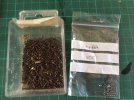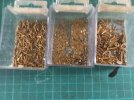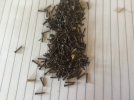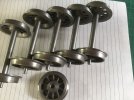Mike W
Western Thunderer
John - the Gauge 3 market is very small, but most of what you mention is not scale specific and probably left from your days of selling metal sections etc? I'd gladly buy 14BA in quantity from you but somebody else may like a wider range.
Jon - A few website now have scanned RCH drawings. The LMS Society is one and here's a typical axle, though later than your period. https://www.lmssociety.org.uk/assets/RCH_1907/RCH_1907_Dwg152.png
Mike
Jon - A few website now have scanned RCH drawings. The LMS Society is one and here's a typical axle, though later than your period. https://www.lmssociety.org.uk/assets/RCH_1907/RCH_1907_Dwg152.png
Mike








